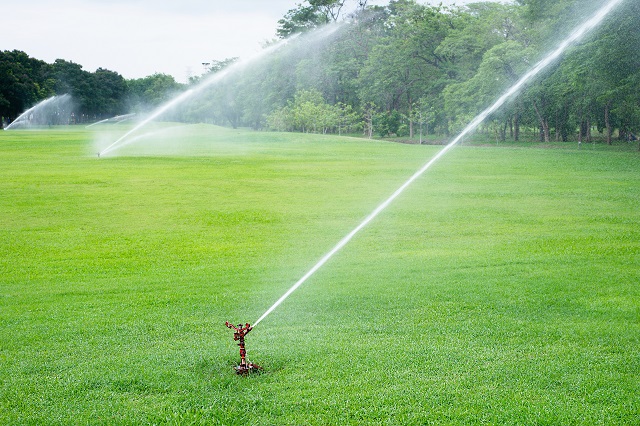How To Interpret The Results Of Your Soil Test & Analysis
All living organisms require nutrients for survival, with turf grass as no exception. When a plant is growing in its natural environment there is no need for humans to interfere with fertilisation, irrigation, etc. This is because the plant is adapted to the specific conditions of that environment so it has access to everything it requires. If it is removed from nature and placed under high stress conditions, in an artificial soil profile (such as that of a golf green, sports field, etc.), then the plant will most likely require human maintenance to survive.

Knowing the physical and chemical properties of a soil is critical to the development and success of nutrient, irrigation and renovation programs. A Soil Analysis provides the turf manager with a vital tool for creating nutrient programs and identifying weaknesses and issues within the soil profile. It will provide recommendations – if needed – on the products and rates required to amend any issues. This allows the turf manager to make decisions regarding product use with peace of mind.
Nutrient Levels and Base Saturation Percentage
The main reason a soil analysis is conducted is to ascertain the levels of nutrients present in the profile. These nutrients are measured in parts per million (ppm), this measurement provides the concentration of the cations in the soil. However the major cations are also converted to a Base Saturation Percentage. This reading gives a balance of the major cations in relation to one another, which is the most important factor in fertile soil.
The Soil Analysis provides the levels of calcium (Ca), magnesium (Mg), phosphorous (P), potassium (K), sulphur (S), boron (B), iron (Fe), manganese (Mn), copper (Cu), zinc (Zn), and sodium (Na). With these levels deficiencies can be identified, and with other measurements such as Organic Matter (OM), Total Exchange Capacity (TEC), pH and Electrical Conductivity (EC), amendment plans can be developed and implemented.
It is important that these nutrients are present in the correct amounts, too much of one nutrient can offset a balance of another, and can sometimes become toxic to the plant. Sodium in particular can occupy available exchange sites, reducing the availability of calcium and magnesium. Below is a table of the major nutrients and their desirable levels in the turf soils.

Organic Matter Percentage (Humus)
The percentage of organic matter is measured to help give an idea of the soils ability to retain nutrients and water, and sustain a population of beneficial microbes. The organic matter content of a soil directly affects its total exchange capacity (TEC). Many sports turf profiles (such as USGA) are primarily sand based and have low water and nutrient retention, so it is important to have an adequate level of organic matter to prevent leaching and water loss.
As well as ensuring the organic matter is not too low, it is equally important to not have excessive levels of organic matter. Excessive levels can significantly impact the soils percolation capability, leading to water logging. The ideal percentage of organic matter is about 2 - 3%. To raise this, organic based products can be applied.
Total Exchange Capacity (TEC)
 The TEC of a soil is its ability to absorb and retain positively charged nutrients in the profile. This is measured in units of meq/100g (milli-equivelants per 100g soil). When fertiliser is applied, the product is broken down by water and makes its way through the profile and into the root zone. When in the root zone the nutrient cations attach to organic and mineral colloids, where they then stay until they are taken up by the plants roots in a soluble form, or they are leached out of the profile.
The TEC of a soil is its ability to absorb and retain positively charged nutrients in the profile. This is measured in units of meq/100g (milli-equivelants per 100g soil). When fertiliser is applied, the product is broken down by water and makes its way through the profile and into the root zone. When in the root zone the nutrient cations attach to organic and mineral colloids, where they then stay until they are taken up by the plants roots in a soluble form, or they are leached out of the profile.
With a low TEC there is a lack of exchange sites for nutrients so many are flushed through the profile. To increase TEC the use of humus based products will increase the humic colloid in the profile, therefore increasing the exchange capacity.
Soil pH
pH is the measure of the acidity or alkalinity of a solution based on the concentration of the hydrogen ion. The pH of a soil is important because it determines the availability of nutrients to the plant. An optimum level for soil pH in a turf grass situation is about 6.5, at this level all of the nutrients that the plant requires are available (see below table). pH problems in a soil profile can result in a general lack of vigour and a lack of response to applied nutrients. This means that the turf manager could be piling expensive fertilisers onto a turf surface for little or no effect, wasting time and money.
There will always be a reason for pH to be at an undesirable level. Often it is the use of certain fertilisers or soil amendments, naturally occurring minerals in the soil or water table, or poor quality irrigation water. Generally speaking, the cause of pH problems in a turf profile can be amended.

Electrical Conductivity (EC)
Electrical Conductivity (EC) is the measure of a soils salinity measured in d/Sm. This measurement can be used to determine the thresholds for damage to plants from high soluble salt (nutrient) content in the soil. EC gives a reading of all soluble salts present, but gives no indication of the types or amounts of each salt.
EC is often misinterpreted as a reading of the level of sodium in the soil, as sodium is a salt. All nutrients concerning turf grass growth are in fact salts; therefore the EC test gives a reading of all present dissolved nutrients. High levels of salts in a profile can cause reverse osmosis in the root system, which causes the plant to dehydrate. Creeping Bentgrass will begin to show effects of high EC at >0.6d/Sm.
The EC level can also indicate the potential for issues with soil structure as some soluble salts will take the place of calcium on exchange sites causing aggregates to disperse. This leads to compaction and a loss of pore spaces.
RECOMMENDED SERVICES

Managing Soil Moisture: The Evolution of Wetting Agents

Ninemire Soil Report






